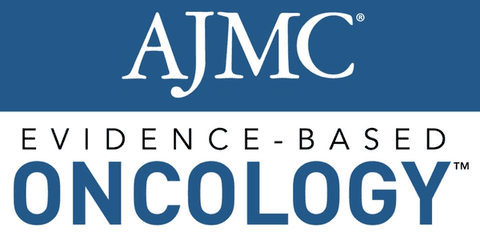Article
Undetectable MRD May Be Used to Develop Early Intervention Strategies in Patients With CLL
Author(s):
A study of 3 assessments for patients with chronic lymphocytic leukemia treated with fludarabine, cyclophosphamide, and rituximab are examined.
Undetectable minimal residual disease (U-MRD) status is useful not only in predicting posttreatment progression-free (PFS) and overall survival (OS) but also in predicting responses early on during treatment of chronic lymphocytic leukemia (CLL), according to the results of a recent study.
U-MRD is a highly predictive factor for longer PFS and OS in patients with CLL. However, its use in predicting clinical outcomes, outcome duration, and factors associated with relapse has been limited. In a recent study, these 3 assessments are addressed for patients with CLL who are treated with fludarabine, cyclophosphamide, and rituximab (FCR).
A total of 289 patients with CLL were followed for a median of 57 months. Evaluation was done after course 3 and at end of therapy (EOT). After course 3, 42 of the 236 (18%) patients with evaluable MRD achieved U-MRD status. Pretreatment characteristics, such as trisomy 12 and negative
fluorescence in situ hybridization (FISH), were significantly associated with an increased probability of achieving U-MRD status. After 3 courses of treatment with FCR, patients with MRD >1% had a significantly inferior PFS compared with MRD 0.01%-1% or <0.01% (P < .001). Characteristics that led to an inferior PFS were unmutated IGHV and del(17p).
Although patients who achieved U-MRD after 3 courses had superior PFS than those MRD, it was uncertain whether it would persist if only 3 courses of FCR were given. Of the 23 patients who only received 3 courses of FCR, there was a trend towards inferior PFS compared with patients who received the full 6 courses (P = .17). However, for the subgroup of 18 patients with mutated IGHV, only 1 patient relapsed of the 11 patients who received only 3 courses of FCR.
At the EOT, 52 of the 154 patients who were MRD-positive after 3 courses converted to U-MRD status. Conversion to U-MRD status was strongly correlated with the level of MRD after 3 courses. For patients with detectable MRD levels of ≤1%, 64% converted to U-MRD status. However, for patients with MRD level >1%, only 8% converted to U-MRD. Combining the patients who converted to U-MRD and the patients who were already U-MRD resulted in a total of 105 patients with U-MRD at the EOT. Pretreatment characteristics that were significantly associated with U-MRD at the EOT included mutated IGHV, negative FISH, and trisomy 12.
Compared with patients who achieved U-MRD status after only 3 courses, patients who achieved U-MRD at EOT did not have inferior PFS. In addition, all patients who achieved U-MRD status had superior OS compared with patients who did not achieve U-MRD status.
Reemergence of MRD occurred in 38 patients who achieved U-MRD status. Mutation status of IGHV was the only factor that affected time to reemergence, with IGHV-unmutated patients more likely to undergo rapid reemergence of MRD compared with IGHV-mutated patients.
Reemergence of MRD was also strongly associated with disease progression. Of the 18 patients who had clinical disease progression, 17 (94%) of the patients had reemergence of MRD preceding clinical relapse.
MRD is 1 of the most important predictors of PFS in patients with CLL. Although it has mainly been used to predict posttreatment survival, investigators have found it helpful in identifying pretreatment strategies and appropriately minimizing the duration of toxic treatments.
Reference
Thompson PA, Peterson CB, Strati P. Serial minimal residual disease (MRD) monitoring during first-line FCR treatment for LCL may direct individualized therapeutic strategies. Leukemia. 2018;32(11):2388-2398. doi:10.1038/s41375-018-0132-y.




